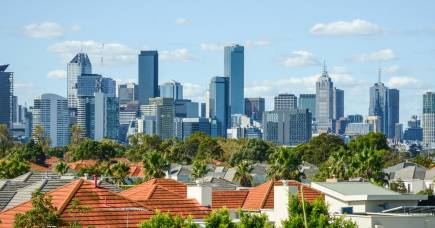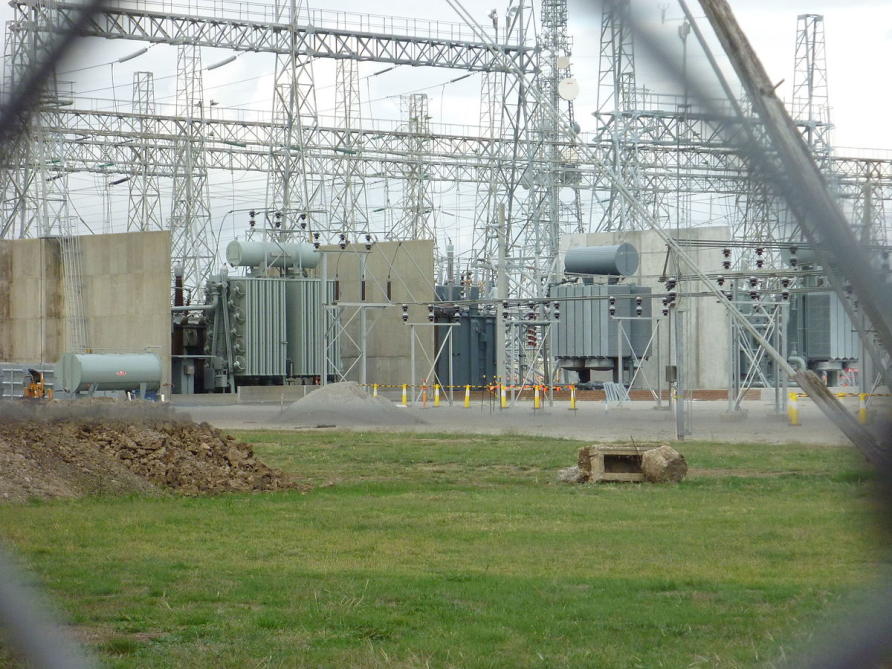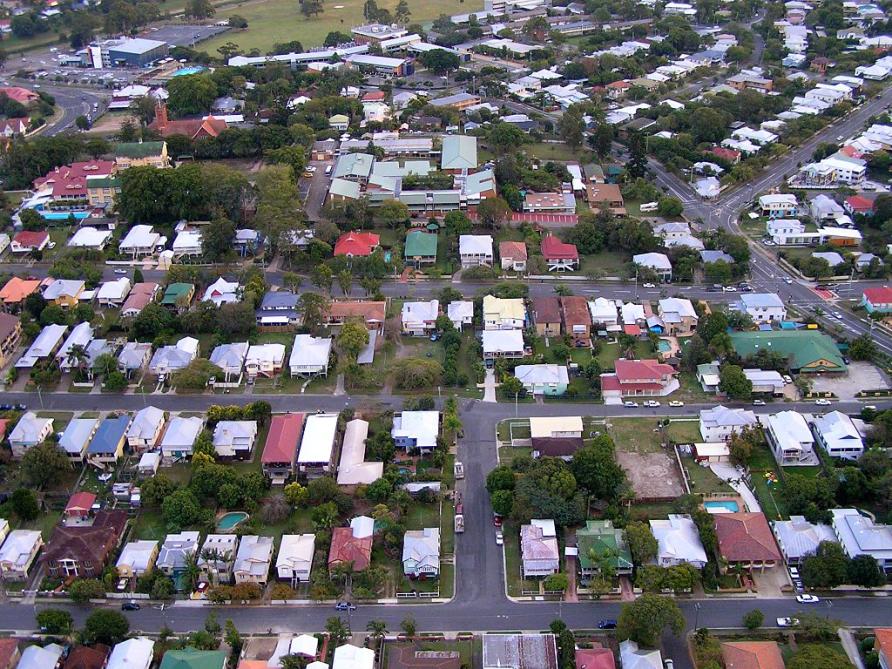#Budget2017: Fairness, security and opportunity?
Pursuit’s rolling coverage of the Federal Budget - providing expert analysis and insight into the key issues and who they affect
The Treasurer’s Budget speech ended as it began, with a focus on fairness, opportunity and trust.
Scott Morrison says his 2017 Budget highlights that this Government will always live within its means.
“This budget is about making the right choices to secure the better days that are ahead. Our choices are based on the principles of fairness, security, and opportunity.”
Spending announcements include in $75 billion in infrastructure funding and money for closing the funding gap on the National Disability Insurance Scheme, with increasing revenue from a hike in the Medicare levy, a continuing crackdown on multi-nationals that don’t pay their fair share of tax and a levy on Australia’s five biggest banks.
Throughout the day, our University of Melbourne experts will continue to update Pursuit with the latest analysis and live insights into the Budget - breaking down the big issues and what they mean for us.
10 May 2017
ICYMI: Budget hits political reset
Nicholas Reece is a former advisor to Labor Prime Minister Julia Gillard and Victorian Labor Premiers Steve Bracks and John Brumby. He is now a Public Policy Fellow at the University of Melbourne. Andrew Trounson spoke with him on Budget night.
Australia’s Federal Budget is as much a political as an economic plan and is the biggest spending budget outside a recession or an emergency.
The Turnbull government has attempted to push the political “reset button” with a big spending budget, says University of Melbourne public policy and political expert Nicholas Reece.
Faced with dire polling the government has gone for popular spending measures on infrastructure and the National Disability Insurance Scheme (NDIS) in part funded by new revenue raising measures in the form of a higher Medicare levy and a new tax on big banks.
“Every budget is a combination of policy and politics but this budget really is all about addressing the political challenges of the Turnbull Government - it is as much a political document as an economic document,” Mr Reece says.
“It is the biggest spending budget in Australian history outside of an emergency or a recession.

Where did all the money go?
He says it buries the previous Abbott coalition government’s 2014 budget that included deep and unpopular spending cuts.
“The days of ‘debt and deficit disaster’ are over and now it is the era of ‘good debt and bad debt.’”
The Turnbull government’s second budget, delivered by Treasurer Scott Morrison on Tuesday, abandons $13 billion worth of unpopular saving measures left over from the Abbott government, which had been repeatedly rejected by the Senate.
“The Budget has been called Labor-lite and that is probably right: it certainly more closely resembles a traditional Labor Government budget than any of the Budgets delivered by the Abbott Coalition Government,” says Mr Reece, who is a former senior adviser to Labor Prime Minister Julia Gillard and Victorian Labor Premiers Steve Bracks and John Brumby.
“This budget finally dumps $13 billion in zombie measures that having been hanging around from the Abbott era, and it sets out some new budget policy directions with a huge investment in infrastructure and funding for the National Disability Insurance Scheme.”
Is this budget fair for young people? @TomTilley & @kumitaguchi look at the top issues affecting our youth in the #budget2017 pic.twitter.com/e8kNnrqqqB
— ABC News (@abcnews) May 10, 2017
Mr Reece, who is now a principal Fellow at Melbourne School of Government and School of Social and Political Sciences, says the decision to end the Medicare rebate freeze will play well politically, and the plan for a Medicare Guarantee Fund to protect health spending heads off any scare campaign from the opposition on health funding.
But he notes that there are also few measures aimed at shoring up the Government’s conservative base with plans for random drug testing of welfare recipients deemed to be at risk of substance abuse, and new penalties for recipients that routinely avoid employment meetings.
“Those measure are right out of the conservative play book,” he says.
“As to are the company tax cuts and the removal of the deficit levy on high income earners.”
Mr Reece says the $75 billion infrastructure plan is a step in the right direction so long as the money goes into worthwhile projects.
The schools funding package falls $22 billion short of Labor’s commitment to fund the Gonski reforms but is a step forward in terms of a needs-based funding model and is still a commitment of significant new funds.
The higher education reforms look set to be one of the big policy debates post Budget with Labor and a number of cross benchers indicating they will not support the plan to charge university students more and cut university funding.

Greater density or urban sprawl - solving the housing challenge
But he believes the government had “wimped out” on tackling housing affordability with its new measures unlikely to make a significant difference.
“Australia’s housing affordability problem stems from too much demand and not enough supply. This Budget does not do enough about either,” he says.
And, according to Mr Reece, the Government’s plan to allow first homebuyers to take advantage of the tax benefits of superannuation when saving for a deposit will add more upward pressure to housing prices.
“What they should have done is address the capital gains tax and negative gearing tax breaks which would have the twin benefits of cooling house price rises and delivering huge budget savings.”
“Overall the budget is the government’s best chance of a political reset and it makes pretty good fist of it.”
Federal budget 2017: No quick fix for first-home buyers in Sydney https://t.co/aTSPxfdMnw pic.twitter.com/p6ki7SO5fs
— ABC Sydney (@abcsydney) May 10, 2017
Federal #Budget2017 - what's changing in education? Our experts @Gwil_C & @KiraVClarke explore: https://t.co/6zwfSHfDPM @TC_education
— MGSE (@EduMelb) May 10, 2017
Tax rises miss productivity test
Professor John Freebairn is the Ritchie Chair in Economics, Faculty of Business and Economics, University of Melbourne
The 2017 Commonwealth in net proposes a significant increase in taxation, estimated at another $6.4 billion over the next four years. The Medicare Levy is to be increased from 2 per cent to 2.5 per cent from July 2019. This is an effective increase in average and marginal income tax rates for all individuals. The five large banks are to pay a special levy of six basis points on their liabilities. It is likely most of the new levy will be passed forward as higher prices for borrowers and lower returns to depositors, rather than lower returns to shareholders.
Other tax increases include: a foreign worker levy, additional effective taxation of foreign investment in property and, further strengthening the capacity of the Australian Taxation Office to crack-down on multinational companies profit shifting out of Australia.
Scott Morrison asks big banks not to pass on levy to customers, saying the public 'already don't like you very much' https://t.co/INew5OYWXe
— ABC News (@abcnews) May 10, 2017
On the other side of the ledger, the budget includes some tax cuts. The immediate write-off of capital expenditure on items costing up to $20,000 for small businesses with a turnover of up to $10 million a year is to be extended for another year. As components of its housing affordability package, the budget proposes: increasing the capital gains discount for investors in affordable housing from 50 per cent to 60 per cent; and, allowing potential first home buyers to enjoy the same tax concessions as for superannuation in building a deposit.
For a first post-election budget, the tax changes cannot be described as fundamental reforms. Yet, significant taxation reform could contribute to required increases in national productivity to support general expectations of higher living standards.
A major concern is the increase of income taxation of individuals. Not only is the Medicare levy to increase, but importantly the non-indexation of the personal income tax rate schedule means income taxation will collect an ever-increasing share of personal income in tax via “bracket creep” or “fiscal drag”.. For example, someone with a taxable income of $50,000 a year would pay $7797 per year in income tax. A 4 per cent increase of income to $52,000 results in a tax payment of $8447, an increase of 8.3 per cent, and a reduction of real take-home pay. Not too far into the future, there will be growing political pressure to reduce the hidden growing tax take of “fiscal drag” by a lower personal tax rate schedule.
TAX CHANGES PIECEMEAL
Taxation reform to promote national productivity and living standards seeks to reduce the distortion costs of taxation. The Henry Review of 2010, and the 2015 government information paper, Re:think, presented many options for reform of Australia’s tax system which would promote national productivity. At the same time, the reforms would collect about the same revenue and preserve or improve the contribution of taxation to meeting society equity objectives. At a general level, the reform proposals involve packages of more comprehensive tax bases by removing special exemptions and deductions and lower tax rates, better design of special indirect taxes to internalise external costs associated with alcohol, petroleum products and road congestion, and changes of the tax mix.
While the tax increases of the 2017 budget have contributed to the return of future budgets to a more sustainable budget balance, the piecemeal changes have done nothing to promote improvements in national productivity. As has often being stated “higher levels of income and wellbeing primarily depend on greater productivity”.
What does the budget and Sen Fifield's proposed changes 2 media mean 4 you: My article fresh off the digital presses https://t.co/Y1fZ19xztJ
— Andrea Carson (@andrea_carson) May 10, 2017
An ESSENTIAL BREAK FOR Doctors
Professor Anthony Scott leads the Health Economics Research Program at the Melbourne Institute of Applied Economic and Social Research.
It was one of Labor’s major pre-election campaigns, but now Turnbull government has taken the wind out of their sails, lifting the contentious Medicare freeze. It’s a win for doctors – but is it enough?
A major health check of doctors in Australia recently revealed general practice is an unpopular choice compared to higher-paid specialists. MABEL, Australia’s national longitudinal survey of doctors, shows GPs work satisfaction has flat-lined since the introduction of the Medicare fee freeze in 2013.
GPs, though, will need to wait to see change. The freeze will be lifted in four stages through until 2020, beginning with bulk billing incentives from July this year. Still, it’s a sign of recognition, which in turn should boost morale and increase attractiveness of general practice for budding doctors.

But will patients also be winners? That will be up to doctors to decide. Doctors have previously warned that the measure will mean patients will be increasingly out-of-pocket for medical services. But GPs and specialists set their fees and decide which patients to bulk-bill - so it’s up to them to pass on these savings to patients.
PREVENTATIVE CARE
Incentives to keep more GPs in practice will free up more hospital beds. But the budget also outlines a number of other promising preventive measures.
Around $65.9 million will be poured into the Medical Research Future Fund, tailored towards preventive health research. Some $10 million to the Heart Foundation will see people moving more, while $15 million will prioritise mental health research into early intervention and prevention.
A budget that focuses on keeping people out of hospital is not only a good thing for our health, but ultimately our country’s bottom line.
#Budget2017 End #Medicare freeze in sight, extra $10B health. Next: money for public hospitals, #prevention #auspol https://t.co/AHGRQTTGzV
— AMA President (@amapresident) May 10, 2017
THE BIG BANK TAX
Professor Kevin Davis, Professor of Finance, The University of Melbourne; Research Director, Australian Centre for Financial Studies and Professor, Monash University.
The budget announcement of a 0.06 per cent levy on a subset of bank liabilities may look arbitrary, and it is certainly politically opportunistic, but it could be rationalised as a response to offsetting a number of distortions in Australia’s banking market. That said, it may not be the best response.
The government, however, has not spelt out a coherent explanation of the rationale for the levy. The levy will certainly have consequences for bank pricing, forms of funding, and competition – and will interact in complex ways with other prudential regulatory changes in the pipeline.
The four majors (ANZ, CBA, NAB and Westpac) and Macquarie Bank will pay the levy on liabilities other than deposits protected by the Financial Claims Scheme (ie deposits under $250,000), and additional Tier 1 (and equity) capital instruments. As a ballpark estimate, it will apply to around 50 per cent of a bank’s total funding, raising the overall cost of funding for the banks by around 0.03 per cent.

So how can this be justified? One argument might be that the large banks receive a competitive benefit through lower borrowing costs from an “implicit government guarantee” because these banks are seen as “Too Big To Fail”. On this basis the levy could be seen as a charge for that benefit.
A second argument could be that (as in Europe) it would be desirable to establish a “resolution fund” to enable the Australian Prudential Regulatory Authority (APRA) to facilitate a smooth exit of a failing bank, such as through a merger. Although the levy goes into general budget revenue rather than a distinct fund, it could be further argued that by improving the fiscal health of the government - it is better placed to support APRA in dealing with a failing bank.
A third argument could be that the nature of the regulatory system (such as capital adequacy requirements) creates a competitive imbalance favouring the big banks. The imposition last year of higher minimum capital requirements for mortgage loans by banks regulated under the “advanced” approach (which covers the five banks subject to the levy) was only a partial response to this imbalance.
A final argument could be that Australian banks have relied too much on funding other than “core/stable” deposits and capital, with potential consequences for safety and systemic stability. Indeed, the large banks have to a significant degree funded their increased share of home mortgage lending since the Global Financial Crisis from wholesale borrowings.
POLITICALLY OPPORTUNISTIC
Each of those arguments has some merit – but there are other, and probably better, ways of dealing with the perceived distortions. Instead the government has gone for a quick, politically opportunistic, measure which helps the budget position and will probably appeal to much of the electorate – even though almost all are bank shareholders indirectly via their superannuation accounts. Together with other bank accountability measures introduced in the budget, it may neutralise whatever support exists for a Banking Royal Commission.
CEO of the ABA Anna Bligh says every Australian will have to pay for the levy on the big 5 banks #Budget2017 MORE https://t.co/i9NLwAjnID pic.twitter.com/tLli4JUzJr
— Sky News Australia (@SkyNewsAust) May 9, 2017
The levy is likely to have a number of significant effects on financial markets and consumers of financial services. The first point is to note that the levy will flow through the banks’ funds transfer pricing systems and affect loan pricing. In this regard it is somewhat silly to suggest that the big banks shouldn’t increase loan interest rates, but at the same time suggest that the measure will improve the competitive position of smaller banks. The latter will only happen if the large banks do increase interest rates.
A second effect is that the large banks will have incentives to fund loans differently. By originating and then securitising loans (ie selling the debt as a security to a third party) they will be able to get them off their balance sheets and funded by the capital market, effectively avoiding the levy.
A third effect will be upon the structure of bank deposit interest rates. Because retail deposits are exempt from the levy, the large banks can be expected to bid for these deposits – pushing up the interest rates offered relative to the cost of borrowing in wholesale and large deposit markets. That is going to compound the already apparent effect on relative interest rates due to recently and forthcoming liquidity regulations being applied by APRA. But it will worsen the relative returns that superannuation funds can get on their large bank deposits, and possibly induce them to look towards investing more in securitised products.
It is perhaps also worth noting that the budget involves changes which will increase competition for retail deposits. The case in point is the measure allowing first home buyers to make limited, tax advantaged, contributions to their superannuation, which can be subsequently withdrawn for a house deposit.
Labor supports a levy on the big banks, but we want to ensure it won’t be passed on to customers. Turnbull hasn’t been clear on that.
— Bill Shorten (@billshortenmp) May 9, 2017
How much of the impact of the changes will fall on shareholders in the large banks (and how large will the effect be) rather than upon customers? That is difficult to answer with any confidence without further detailed analysis beyond the scope of this article. The revenue to be raised is large in the absolute dollar amount – but is relatively small as a percentage of current bank profits (in the order of 4-5 per cent).
It could be expected that some part of the levy will be passed on to customers, or avoided by the banks shifting to other forms of funding which do not incur the levy. That means the short-run direct impact on after tax profits and shareholders will be somewhat less than that 4-5 per cent figure.
But the big unknown is how the change, in conjunction with other ongoing regulatory changes affecting the financial sector, will impact the competitive balance between the big banks, smaller bank competitors and capital markets and, in turn, their long-term prospects. That awaits further analysis.
Nobel Laureate pETER dOHERTY WELCOMES BUdget
Good to see an LNP budget that takes the responsible position of raising revenue and focuses on infrastructure development.
— Prof. Peter Doherty (@ProfPCDoherty) May 9, 2017
Drug tests for welfare recipients: Poorly considered
Associate Professor John Fitzgerald is a criminologist at the University of Melbourne.
Scott Morrison’s proposed welfare drug testing trial is meant to be about creating responsibility in the system. This program is however unlikely to help welfare recipients who have substance use problems be more responsible.
Rather, experience from the USA suggests these are costly programs with a low rate of positive test results.
.@ACOSS tells @breakfastnews #budget2017 fails to help disadvantaged. More #auspol budget reaction at our live blog: https://t.co/fDGkuze2kh pic.twitter.com/OHc4HwTQTS
— ABC News (@abcnews) May 9, 2017
If this trial is expanded, it is likely it will produce a cost shift from the federal welfare budget to state crime budgets, as drug crime is displaced by other criminal activities (rather than paid work, as intended).
Return on investment
Some states in the United States introduced drug screening and testing with its Temporary Assistance for Needy Families (TANF) program and other programs.
According to the National conference of State Legislatures, 15 states have adopted similar drug testing provisions for welfare programs. A 2015 review of seven states found the program to be poorly designed and expensive.
A 2016 review of ten states reported they spent $850,909.25 on the testing regimes in 2015 to uncover just 321 positive tests - a cost of over $2500 per positive test.
Displacing the costs
The knock-on effects of this policy appear to be poorly considered.
Whether or not people present positive tests, it is possible the program will impact on a proportion of welfare recipients who engage in the informal drug economy.
For those who do test positive and receive sanctions that result in reduced access to living money, these people will still need a living income. This will open the window to engage in other types of crime in order to make money.
Like any commodity, drugs carry value. As the transaction costs for participation in the drug market increase, costs will be borne elsewhere. People will displace their illegal activity away from drug markets, into other markets such as property crime.
It’s not clear from the budget papers whether the maths related to the proposed program include the costs to the states’ criminal justice systems as people shift their informal income away from the drug market to the market for stolen goods.
This will put more pressure on police, the courts and the correctional system. In those states and territories currently struggling to provide adequate drug treatment systems under the current conditions this is simply not-well-thought-through policy.
The costs of symbolism
This is a program to demonstrate some form of symbolic belt tightening in the budget.
The experience from the United States suggests this kind of program is not likely to detect many people. A 2011 Federal US Department of Health and Human Services report about welfare drug testing noted that “none of the legislative costs estimates we identified estimated net savings as a result of the proposed drug testing programs”.
It may also be criminogenic; that is, likely to cause criminal behaviour. It is also unlikely to reduce drug use or unemployment.
Federal Budget 2017: Regional focus. @Barnaby_Joyce says rail line will create "inland corridor of commerce" #Budget2017 #auspol pic.twitter.com/xpg64UIjSJ
— ABC News (@abcnews) May 10, 2017
If scaled up this will have a devastating effect on those with acquired brain injury from drug overdose. This is perhaps one of the most vulnerable groups in society. There is little value in the symbolism of treating these people harshly.
Ultimately this is a trial. As a researcher I am all for trials, and testing out new ideas and being innovative, but trials require significant thought, planning and reflection.
If this was an ARC project grant application, I doubt whether this trial would have got through a first-stage review. Maybe that is why we should leave dentistry to dentists, economics to economists and drug interventions to drug policy practitioners.
Buzzfeed’s five things to know about the Budget
Here’s what you need to know about #budget2017: pic.twitter.com/MS4waaxtbz
— BuzzFeedOz Politics (@BuzzFeedOzPol) May 9, 2017
Budget 2017: “GooD DEBT” reform not the best
Professor John Freebairn is the Ritchie Chair in Economics, Faculty of Business and Economics, University of Melbourne
The Commonwealth budget for 2017 has proposed classifying some investment outlays on physical infrastructure, such as rail, road and airport projects, as “good debt” and moving them off the general or recurrent budget. Treatment of the funding of the NBN project is an example to be replicated.
In principle, the idea that future generations who will benefit from investment in public infrastructure today should pay in the future makes sense. Also, this model is used for investment decision making by most businesses and households. However, the proposal introduced in the budget is deficient in several important dimensions.
First and foremost, “good debt” assumes borrowing today to fund investment in infrastructure for future benefits will make a net positive contribution to the economy. The Treasurer Scott Morrison in his budget speech flagged the establishment of a new Infrastructure Agency to bring additional expertise into its infrastructure investments. Yet, he also flagged a set of projects for the next ten years at a cost of around $75 billion. Only if transparent and public business case assessments are made can there be confidence that worthwhile projects will be funded.
There remains a risk that history will repeat itself and the choice of projects will be driven by short term politics aimed at winning votes in marginal seats, rather than being based on the country’s future prosperity.

Second, no logical framework to handle interactions between the Commonwealth, state and territory, and in some cases also local, governments has been announced. Rather, the Commonwealth seems yet again to be asserting control at the expense of the lower levels of government. There is no reason to be confident that the example of Commonwealth and Victorian governments bickering over an east-west road project versus a north-south rail project will not be repeated. Clearly, obtaining inter-government agreement and cooperation for the funding, construction and operation of long term infrastructure investment projects will vary from one project to another. Nonetheless, a general set of principles and strategy needs to be articulated to ensure value for money.
Third, if government off-budget funding of “good debt” is to mimic business and household debt funding of investment, provision has to be made in future recurrent income and expenditure budgets. The infrastructure investment outlay has to be repaid overtime by future generations who benefit. Future recurrent budget expenditure would include depreciation and interest payments for the investment, as well as on-going maintenance and other operating costs. In the case of society beneficial infrastructure investments, these on-going recurrent expenses will be more than compensated by the additional income from the sale of extra services provided by the infrastructure investment, and by the additional taxation collected from the larger income from the more productive and larger economy underpinned by the investment.
Federal Budget 2017: Regional focus. @Barnaby_Joyce says rail line will create "inland corridor of commerce" #Budget2017 #auspol pic.twitter.com/xpg64UIjSJ
— ABC News (@abcnews) May 10, 2017
Finally, a question needs to be asked whether a particular project requires government funding. Where feasible and practical, private sector investment has natural advantages to provide better quality and lower cost services because of accumulated experience and skills coupled with competitive pressures to perform. In some cases government non-financial support and regulation for private sector involvement in the investment and operation of transport infrastructure, and regulation against monopoly pricing, is required.
Given that investment in infrastructure is of a long term nature, bipartisan support for a wider set of principles on the choice of projects to fund, and for the funding of and the management of projects, is needed. Also, these principles require agreement across the different levels of government. Without these principles, there is an unnecessary risk of “good debt” projects failing to make a net contribution for future generations.
2017 Budget and energy
Dr Roger Dargaville is Deputy Director of the Melbourne Energy Institute.
There are a number of interesting measures in the Budget affecting the energy sector.
Many of these measures are aimed at reducing the cost of gas. In the last couple of years the price of gas on the wholesale market has soared, from around $3 per gigajoule up to $9 per gigajoule or even higher. The reason for this is the installation of the three large liquid natural gas export terminals in Gladstone, Queensland, that now means that gas producers can sell to international customers prepared to pay much higher prices than the domestic market has traditionally supported.
The measures in the budget relating to gas include $58 million for unconventional onshore gas exploration and improvements to access to onshore gas. There is $20 million to reform the gas markets to improve transparency and presumably to reduce the gas pipeline network’s ability to charge high prices.
Also, there is $7 million for studies into gas pipeline network expansions between South Australia and Western Australia and between South Australia and the Northern Territory.

Expansion of the gas pipelines might make gas cheaper in South Australia, but it is more likely to open the Western Australian market to the high prices seen in the Eastern states, which would be a good thing for the gas producers but no-one else. The cost of a pipeline to Western Australia would be high.
Also, providing funding for onshore gas exploration is unlikely to be very effective –with already high wholesale prices, onshore gas production in Queensland and NSW is going as fast as it can. The Victorian Government has chosen to apply a blanket ban on onshore gas exploration, so no amount of funding will make more gas available there.
Overall, the measures in place are very unlikely to have a significant impact on the overarching problem of exposure of the domestic gas market to international prices.

You snooze you lose in Victoria's electricity market
Outside the gas sector, we have the announcement that the Federal Government will look into purchasing the Snowy Hydro Scheme from the NSW and Victorian Governments. The revenue going to the states would have to be reinvested in other infrastructure. This move would guarantee the Snowy remains in public hands, and therefore should help maintain energy security. It would also allow the Federal Government to enact its plans to expand the capacity of the Snowy by 2 gigawatts, but it is yet to be seen if the business case for doing so stacks up.
There is $100 million in equity available to construct a solar thermal plant in South Australia at Port Augusta. Solar thermal is an emerging renewable energy technology that captures the heat of the sun by focussing mirrors onto a central receiving tower and heating molten salt to 600℃. The molten salt can be stored for hours before being used to generate steam and then electricity well after the sun has set. This ‘dispatchable’ renewable technology is probably going to be the most cost effective way of producing baseload renewable power aside from hydro. And given South Australia’s lack of water, hydro is not really an option.
Other smaller measures include $13 million under the ‘Energy for the Future’ program to CSIRO to improve energy forecasting data collection and modelling. While details are yet to emerge, the importance of being able to predict the output of wind and solar plant as well as demand will be crucial to energy security in a high penetration renewable energy future.
On a final note, we shouldn’t be looking to the Budget for fixes to climate policy. Most of the available measures for reducing carbon emissions or increasing market share of renewables do not cost the government large sums.
The Renewable Energy Target and the Emission Trading Scheme (ETS) have not affected the government’s bottom line. The ETS was approximately revenue neutral with the income from the price on carbon being recycled in tax reform and subsides for affected groups. The proposed emission intensity scheme would also not cost the government large sums to run. Only the expensive and largely ineffective direct action policy has been costly, and this appears to have dropped off the Budget in 2017.
The Renewable Energy Agency and the Clean Energy Finance Corporation maintain their status quo, so at least the war on renewables appears to be on hold for the moment.
In summary, some interesting measures relating to energy, but nothing that will seriously shake up the industry. Stay tuned for the Finkel Review in a month or so – then things will get very interesting.
2017 budget – affordable housing for whom?
Professor Carolyn Whitzman and Kate Raynor are members of the Transforming Housing research network.
In advance of the Budget, Treasurer Scott Morrison said there is no magic bullet on housing affordability. While this is true of most wicked policy issues, there does need to be a comprehensive program based on evidence. This Budget does not deliver on such a program. For the low income earners struggling to put a roof over their head and the first home owners struggling to raise a deposit, this budget may seem like a cup of water attempting to put out a raging fire.
Housing for very low income households
The lowest 20 per cent of Australian households earn $22,000 a year in 2011. While some of these households are retirees who have paid off mortgages, that leaves well over 150,000 households that are effectively locked out of the rental market in Australia’s two largest cities and who are thus at risk of homelessness.
It is thus unsurprising that in 2011, there were over 100,000 people who were homeless on any given night, an increase of 20 per cent since 2006, and the number continues to grow. It is perhaps fortunate that the Budget has been released ahead of 2016 census data, which would certainly record further increases.

The Budget has pledged $375 million in crisis accommodation over three years, starting more than a year from now (July 2018). But the current federal-state agreement on homelessness services expires in June 2017, leaving a year with no funding for homelessness services. The peak body lobbying for homelessness was defunded in 2015.
In contrast, the Victorian State Government, in its Homes for Victorians policy, pledged $1 billion in a fund to boost housing for very low income people.
Housing for low and moderate income households
The Federal Government itself estimates a current short fall of over half a million affordable homes, in the wake of an 80 per cent increase in housing costs relative to incomes in the last three decades.
In response, an increasing proportion of households – mainly young adults, but also older women and many two income earners – are dependent on Australia’s rental market, which is considered ‘unique’ amongst OECD countries. Despite the proportion of renters’ households increasing from one quarter to close to one third of Australian households, we have one of the lowest proportions of government and non-profit housing in the world. Unlike most other countries, there is no multi-household rental investment class.
Investors – heavily subsidised by the Federal Government – purchase almost half of properties, driving up housing costs. At the same time, secure rental housing measures available in most other countries are not available in Australia. One in five renting households are on month by month rolling leases.

Greater density or urban sprawl - solving the housing challenge
The Federal Government is attempting to address this lack of affordable housing through what appears to be a rehashed and watered-down National Rental Affordability Scheme (NRAS). Investors will be offered a further 10 per cent discount on their Capital Gains Tax in return for renting their homes at a below market rate to eligible tenants for at least three years. This initiative echoes the NRAS brought in by the Labor Government in 2008 but delivers less years of affordability (three years rather than ten) and has not been finalised (there is no definition of ‘affordable housing’ or ‘eligible tenant’ as yet).
A much-discussed ‘bond aggregator’ is included in the Budget, which will assist non-profit and private housing providers to create units set at 80 per cent of area median rents. While these can be characterised as baby steps towards a healthy and available multi-family rental sector, it should also be recognised that 80 per cent of market rent is still unaffordable to many renting households – half of whom earn less than $35,000 a year.
Continuing business as usual
The Federal Government continues to put its main regulatory and fiscal supports into suburban sprawl and housing as an investment strategy, two mechanisms that are perhaps most responsible for the precipitous rise in housing costs relative to income.
These policies include: billions of dollars for new infrastructure in outer suburbs, release of federal lands for subdivisions, first time home buyers’ grants, an increase in capital gains exemptions, and various incentives for first time homebuyers to purchase housing instead of superannuation, and for older households to sell housing and purchase superannuation.
The First Home Super Saver Scheme, that allows first home buyers to salary sacrifice into their superannuation for tax concessions, seems pointless at best and perverse at worst. The scheme is reminiscent of the First Home Saver Account abolished in 2014 due to a lack of uptake and lack of impact . This is potentially the best case scenario.
As we’ve argued before, first home owner grants and other demand-side stimuli usually serve to inflate the cost of housing, privileging existing home owners and making housing less affordable.
These mechanisms work against most states’ attempts at urban consolidation. Most importantly, they work against housing affordability, by further heating up a market already super-heated by the huge capital gains tax exemptions and negative gearing mechanisms that cost almost $12 billion annually in forfeited revenue.
Winners and Losers
So who gains in the housing measures of the 2017 budget? The usual suspects: multi-property investors, people who already own homes and have no immediate plans to move, and housing speculators.
Housing related budget measures fly in the face of popular opinion – 70 per cent of Australians are concerned about not being able to purchase housing, almost twice as many support removing negative gearing as support it, and twice as many Australians are willing to stop their home value increasing in order to improve housing affordability. It is possible the Federal Government will be a loser, if it does not offer up a comprehensive program to address affordable housing ahead of the next election.
Transforming Housing is hosting a second Affordable Housing Summit on Friday, June 2, bringing together governments, developers and investors together to discuss how best to increase quantity and quality of affordable housing in Melbourne, in the light of recent state and Commonwealth policy announcements.
Higher education funding
Last week the government pre-announced changes to higher education funding ahead of the Budget. While the new package for universities is a significant improvement for the sector on earlier plans to cut funding by 20 per cent, it still represents a drop in income. It also means students will face higher fees, and they will have to start paying these back earlier under changes to HECS.
University of Melbourne principal policy advisor, Gwilym Croucher outlined what these changes mean in The Conversation.
breaking down the numbers
#Budget2017 sliced and diced: Where every dollar comes from, and how it's spent https://t.co/Fgwt0Zd87Y pic.twitter.com/nrEuOSmcSL
— ABC News (@abcnews) May 9, 2017
Read the Budget speech in full
This Budget makes the right choices to secure the better days ahead.
— Scott Morrison (@ScottMorrisonMP) May 9, 2017
You can read my Budget speech here: https://t.co/yuBER8R217 pic.twitter.com/H7wiD9JiBO
Housing affordability: Dr Kate Shaw responds
Dr Kate Shaw is an Australian Research Council (ARC) Future Fellow in Urban Geography and Planning at the University of Melbourne.
Australia is a rich country. This budget increases the benefits for the most privileged. It gives limited support to the poorest, but doesn’t change any of the fundamentals that contribute to the nation’s profound and increasing inequalities.
Its singular contribution is that it emphasises the importance of public investment and ownership. Its willingness to increase taxes is the beginning of hope.

How to advance Australia fair
There are elements in this budget that Labor would never get away with – in particular the infrastructure investment commitment, especially to rail, and the levy on the big banks (though notably there is no capacity to limit commensurate increases in fees).
But on housing supply, the pronouncements are disappointing.
The supply-side measures are poor – the key initiatives are small, untied and unsupported.
On the demand side, most of the pronouncements will increase housing prices.
On supply
An online Commonwealth land registry for the purposes of affordable housing development is welcome. For Melbourne, the release of surplus Defence land at Maribyrnong has long been called for and is nothing spectacular.
The announcement of a new National Housing Finance and Investment Corporation to provide long-term, low-cost finance supporting more affordable rental housing is welcome, but must be tied to specific targets. What is the long-term fate of National Affordable Housing Agreement?
Allowing Managed Investment Trusts (MITs) into the housing sector is alarming, though the provision of more vehicles for superannuation funds to invest in affordable housing is very important. How will these be enabled? How will the MITs be monitored?
The support for State, Territory and local governments to impose inclusionary zoning requirements on new development sites is fine, but as inclusionary zoning is a state matter and has been systemically resisted at that level for decades, it’s not clear how such support will be implemented.
Increasing tax concessions for affordable housing investors (60 per cent capital gains discount) is poorly thought-through – it’s an encouragement for them to sell.
Most importantly, the unwillingness to act on negative gearing and capital gains tax discounts is a deep indictment of the continuing protection of entrenched privilege. The political class and its supporters are the greatest beneficiaries of this policy.
On demand
The First Home Super Savers Scheme, which attracts the tax advantages of superannuation, will have no impact on the fundamental problem of increasing house prices.
Encouraging older Australians to free up housing stock, by enabling downsizers over the age of 65 to make a non-concessional contribution of up to $300,000 into their superannuation fund from the proceeds of the sale of their principal home, is good for those who are privileged to start with, but similarly does nothing to reduce housing costs.
The annual foreign investment levy of at least $5,000 on all future foreign investors who fail to either occupy or lease their property for at least six months each year is fine – but how will it be monitored? The Foreign Investment Review Board has long demonstrated profound incapacity in oversight of foreign investment. Similarly, how will the requirement that prevents developers from selling more than 50 per cent of new developments to foreign investors be effected?
What the papers are saying
A round-up of the #Budget2017 newspaper front pages https://t.co/KMXrRh6VLE pic.twitter.com/Weeo864OxV
— Marc Dodd (@marcdodd) May 9, 2017
School funding: an explainer
Schools are one of the big winners in this Budget, with the Government moving to simplify the funding system. The deals struck by the previous Gillard government to pass the so-called Gonski reforms had resulted in highly complicated and, in some cases, inequitable, funding arrangements.
Our school funding expert Dr Glenn Savage helped unpick this complex topic after the Government’s pre-Budget announcement last week. Read more on The Conversation.
BUDGET HITS POLITICAL RESET
Nicholas Reece is a former advisor to Labor Prime Minister Julia Gillard and Victorian Labor Premiers Steve Bracks and John Brumby. He is now a Public Policy Fellow at the University of Melbourne. Andrew Trounson spoke with him on Budget night.
Australia’s Federal Budget is as much a political as an economic plan and is the biggest spending budget outside a recession or an emergency.
The Turnbull government has attempted to push the political “reset button” with a big spending budget, says University of Melbourne public policy and political expert Nicholas Reece.
Faced with dire polling the government has gone for popular spending measures on infrastructure and the National Disability Insurance Scheme (NDIS) in part funded by new revenue raising measures in the form of a higher Medicare levy and a new tax on big banks.
“Every budget is a combination of policy and politics but this budget really is all about addressing the political challenges of the Turnbull Government - it is as much a political document as an economic document,” Mr Reece says.
“It is the biggest spending budget in Australian history outside of an emergency or a recession.”

Where did all the money go?
He says it buries the previous Abbott coalition government’s 2014 budget that included deep and unpopular spending cuts.
“The days of ‘debt and deficit disaster’ are over and now it is the era of ‘good debt and bad debt.’”
The Turnbull government’s second budget, delivered by Treasurer Scott Morrison on Tuesday, abandons $13 billion worth of unpopular saving measures left over from the Abbott government, which had been repeatedly rejected by the Senate.
“The Budget has been called Labor-lite and that is probably right: it certainly more closely resembles a traditional Labor Government budget than any of the Budgets delivered by the Abbott Coalition Government,” says Mr Reece, who is a former senior adviser to Labor Prime Minister Julia Gillard and Victorian Labor Premiers Steve Bracks and John Brumby.
“This budget finally dumps $13 billion in zombie measures that having been hanging around from the Abbott era, and it sets out some new budget policy directions with a huge investment in infrastructure and funding for the National Disability Insurance Scheme.”
Mr Reece, who is now a principal Fellow at Melbourne School of Government and School of Social and Political Sciences, says the decision to end the Medicare rebate freeze will play well politically, and the plan for a Medicare Guarantee Fund to protect health spending heads off any scare campaign from the opposition on health funding.
But he notes that there are also few measures aimed at shoring up the Government’s conservative base with plans for random drug testing of welfare recipients deemed to be at risk of substance abuse, and new penalties for recipients that routinely avoid employment meetings.
“Those measure are right out of the conservative play book,” he says.
“As to are the company tax cuts and the removal of the deficit levy on high income earners.”
Mr Reece says the $75 billion infrastructure plan is a step in the right direction so long as the money goes into worthwhile projects.
The schools funding package falls $22 billion short of Labor’s commitment to fund the Gonski reforms but is a step forward in terms of a needs-based funding model and is still a commitment of significant new funds.
The higher education reforms look set to be one of the big policy debates post Budget with Labor and a number of cross benchers indicating they will not support the plan to charge university students more and cut university funding.

Greater density or urban sprawl - solving the housing challenge
But he believes the government had “wimped out” on tackling housing affordability with its new measures unlikely to make a significant difference.
“Australia’s housing affordability problem stems from too much demand and not enough supply. This Budget does not do enough about either,” he says.
And, according to Mr Reece, the Government’s plan to allow first homebuyers to take advantage of the tax benefits of superannuation when saving for a deposit will add more upward pressure to housing prices.
“What they should have done is address the capital gains tax and negative gearing tax breaks which would have the twin benefits of cooling house price rises and delivering huge budget savings.”
“Overall the budget is the government’s best chance of a political reset and it makes pretty good fist of it.”
Banner image: Shutterstock